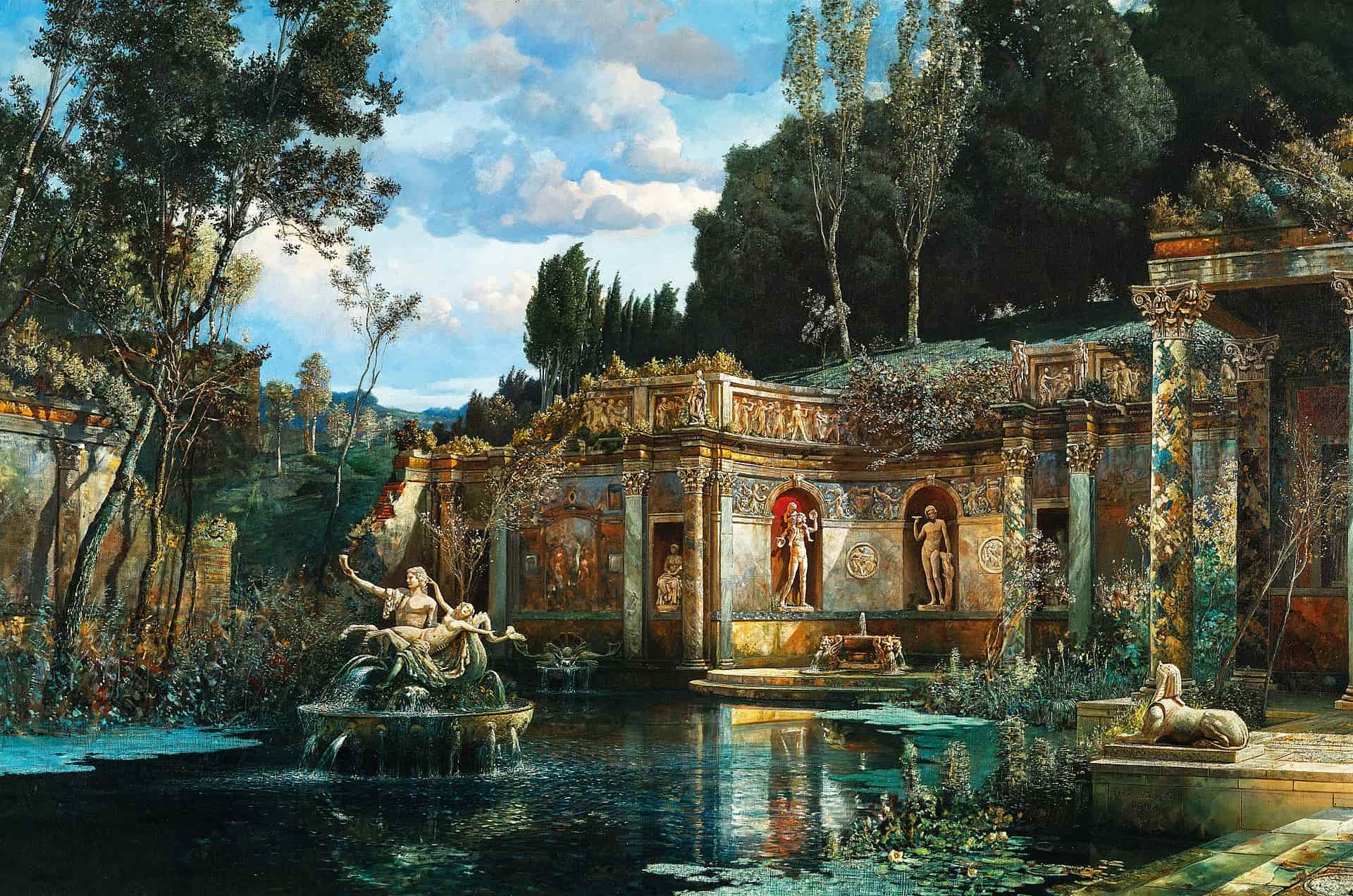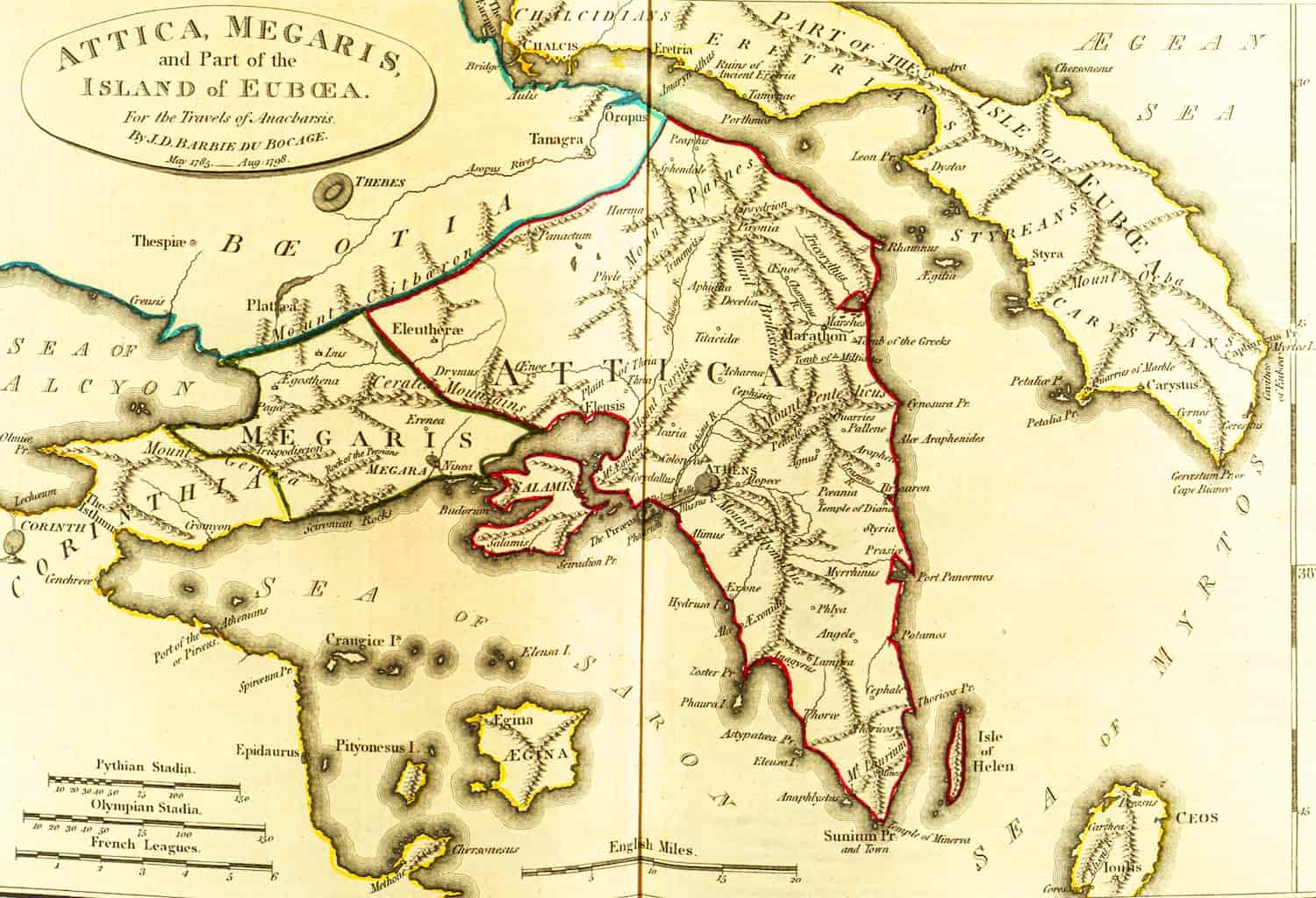The term “nymphaeum,” or nymphæum in ancient Greek (νυμφαῖον), refers to an architectural structure. In antiquity, it was a small sanctuary dedicated to water nymphs, typically constructed near a water source or reservoir, known as krene (κρηνη in ancient Greek). Among the Romans, it was called “luterium” (Latin: luteris), which denoted a basin for ablutions or a bathing pool.
Ancient Nymphaea
In Ancient Greece, natural sanctuaries for nymphs, deities of natural forces, were considered to be caves, groves, and forests. However, since ancient Greek nymphs patronized not only natural phenomena but also human creative endeavors, temples dedicated to nymphs often shared symbolic significance with magical springs. For instance, the Hippocrene (Ἵππου κρήνη), a sacred spring of poetic inspiration atop Mount Helicon in Boeotia, was believed to have emerged from the hoof strike of the winged horse Pegasus. A similar role was attributed to the Castalian Spring on Mount Parnassus.
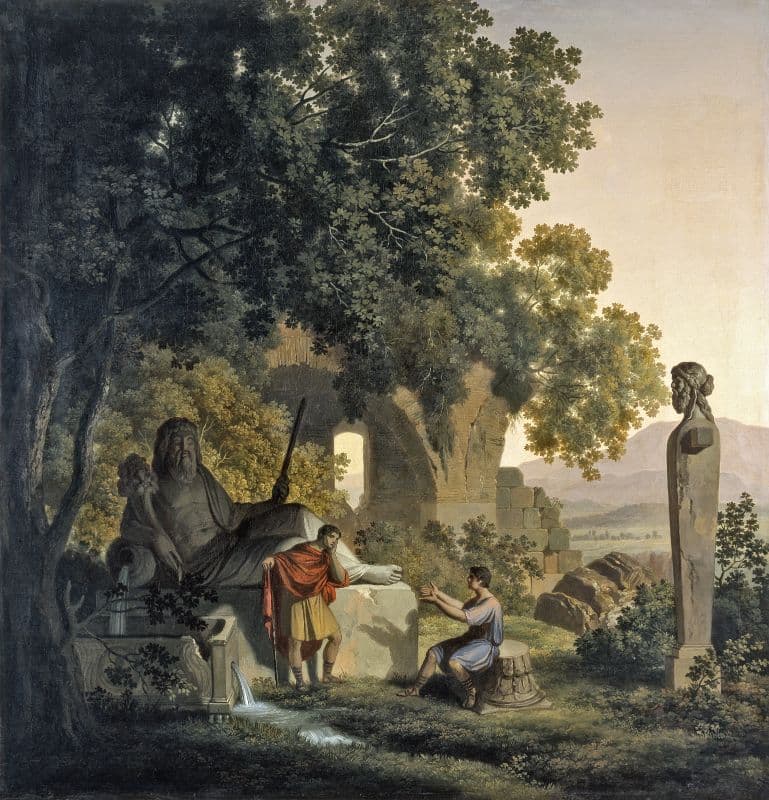
P. P. Muratov eloquently described the natural sanctuary of the nymph Egeria in the Roman Campagna:
“Droplets falling from the ceiling in the grotto of Egeria are still audible, like the murmurs of nymphs, once understood by Numa Pompilius… The entire place with the stagnant waters of Almon, reeds, green hills, and mighty oaks of the sacred grove, with the cool shade of the nymphaeum, seems legendary and marvelous. Bosco Sacro comprises several very old evergreen oaks, growing in a perfect circle… Inside, there is a ready space for an altar, but even without one, the spirit of ancient religion dwells here.”
In the Hellenistic and Roman periods, small structures above water sources, such as aediculae, steles, marble fountains, and basins, began to be dedicated to woodland and lake nymphs. Occasionally, a wall or pilaster was adorned with a niche containing a statue of a nymph, a fountain, and a basin. “In the 1st and 2nd centuries AD, separate spaces with fountains, also called nymphaea, were constructed in the homes of Roman patricians and on Pompeian villas.
The fountain provided coolness, and a small altar served as offerings to the household gods: Lares and Penates.”
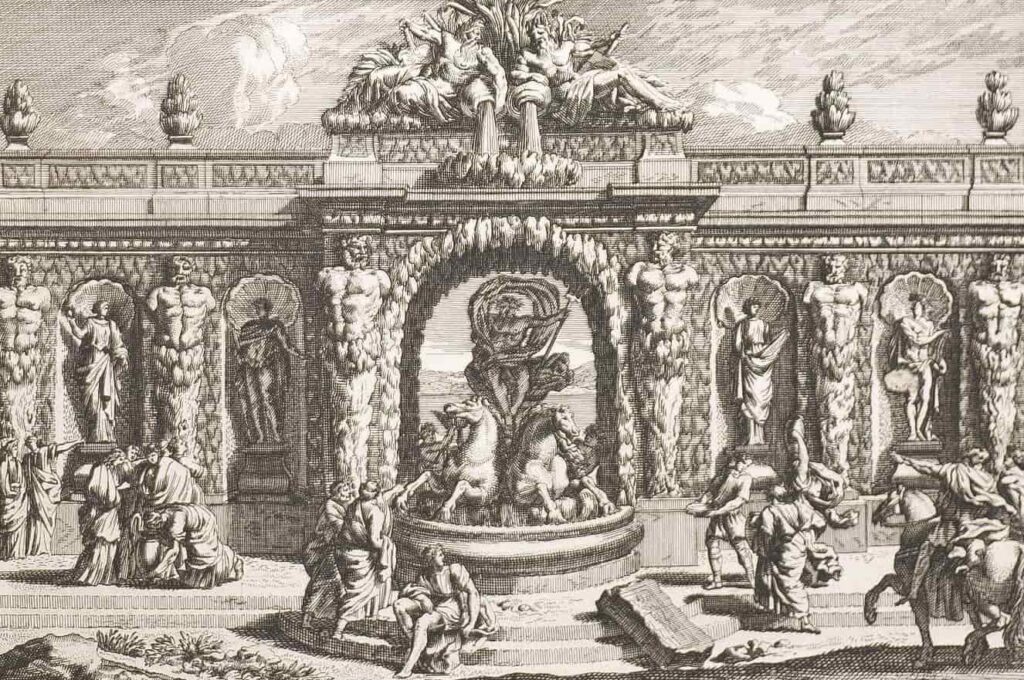
Nymphaea were also built in the form of square or round buildings with columns, sometimes multi-story, or in a tholos-type structure, later stylized as a natural cave: grotto. For example, in Pozzuoli near Naples, the ruins of the Nymphaeum of Diana have been preserved, of which the circular foundation and part of the elevation remain.
In the Hellenistic and Ancient Roman periods, the term “nymphaeum” began to be used for structures adorning water sources, as well as city buildings with reservoirs for domestic needs but consecrated with images of nymphs or allegorical statues. A series of authentic ancient nymphaea remnants have been preserved and discovered during archaeological excavations, particularly in the Middle East, which was previously under the influence of Hellenistic and Roman culture.
A prominent monument of ancient architecture was the Septizonium (Latin: Septizonium, from Latin septem, seven, and Latin zona, belt, framing), a monumental structure in Rome at the foot of the Palatine Hill, constructed in 203 CE by Emperor Septimius Severus. The building had seven tiers with niches and rows of columns, adorned with marble and statues. The nymphaeum was completely demolished by the order of Pope Sixtus V in 1588–1589; the remaining construction material was used for new buildings, including the Sistine Chapel and the Basilica of Santa Maria Maggiore. Only some remnants of the foundation and Renaissance-era sketches of the Nymphaeum ruins have survived.

In Asia Minor, huge nymphaeas with colonnades, porticos, and statues were constructed. One of the most vivid reconstructions reproduces the appearance of the monumental nymphaeum in Miletus, which adorned the market square of the ancient city (1st–3rd centuries CE). Only the ruins of the structure have survived.
In the early Christian era, nymphaea served as baptisteries.
In the Middle Ages, ancient krene were transformed into “Holy Wells” (Latin: Sacrum Puteus)—”puteals,” reservoirs, sometimes with a fountain in the center and a canopy—ciborium, located in the middle of the monastery’s atrium or courtyard. Such a water reservoir was symbolically reinterpreted as a source of eternal life bestowed by faith in Christ. A comparable medieval monument, though with a different function and composition, is the “Well of the Ancestors” or “Moses’ Well,” a work by the Flemish sculptor Claus Sluter created for the Carthusian monastery in Champmol near Dijon, France.
Fountains and Architectural Structures of the Modern Era, Tracing Back to Ancient Nymphaea
Renaissance and Baroque urban fountains, particularly those in Rome, also draw inspiration from ancient nymphaea. For example, the Fountain of Acqua Felice (Italian: Fontana dell’Acqua Felice), also known as the Fountain of Moses, is a monumental Baroque fountain located on the Quirinal Hill in Rome, Italy. It adorns the endpoint of the ancient aqueduct of the same name, renewed under the direction of Pope Sixtus V. Designed and constructed by Domenico Fontana between 1585 and 1588, the fountain incorporates elements from ancient sources, similar to the renowned Trevi Fountain in Rome.
One of the most famous monuments of the French Renaissance period is the masterpiece by architect Pierre Lescot and sculptor Jean Goujon, the “Fountain of the Innocents” in Paris (1547–1549), which harks back to the traditions of ancient nymphaea.
During the Neoclassical era and the fascination with ancient art, pavilions and nymphaea began to appear in European estates and parks, usually representing architectural fantasies inspired by ancient themes. Such nymphaea can be found in many countries and cities in Western Europe. The “Nymphenbad” (Bath of the Nymphs) is present in the Zwinger, a unique architectural-sculptural ensemble in the German Baroque style in the heart of Dresden, Saxony, created by architect M. D. Pöppelmann and sculptor B. Permoser (1709–1719).
General
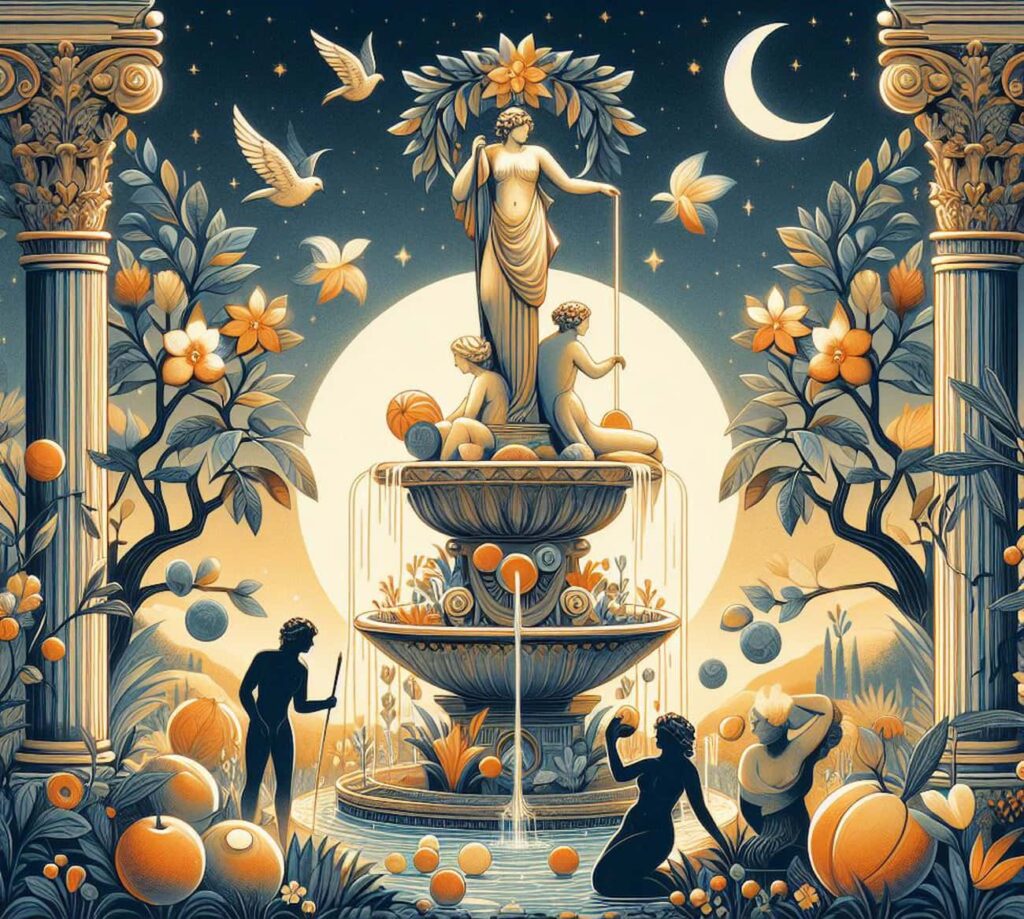
Generally, such places were naturally occurring caves from which springs emerged, considered baths and meeting places of the Nymphs. The entire ancient Greek landscape was dotted with such Nymphaea, where Greek civilization flourished. Homer refers to the Nymphaeum of Ithaca, where Odysseus sought refuge and prayed upon his return to his homeland, similar to the cave of Calypso, which was also a Nymphaeum.
Greek Nymphaea
The ancients also referred to artificial structures housing the springs and fountains of cities as Nymphaea, often dedicated to the Nymphs. Examples include the spring of Theagenes in Megara, the springs of Prine and Glauce in Corinth, and the Kallirrhoe spring in Athens. Notable Nymphaea mentioned by historians include:
- Nymphaeum of Parnassus (mentioned by Strabo and Pausanias).
- Nymphaeum of Sipylos, or the Cave of Sipylos (Iliad).
- Nymphaeum of Cithaeron, dedicated to the Sphragitides Nymphs, near Phyle, mentioned by Pausanias, Plutarch, and Aristotle.
- Nymphaeum of Helicon, dedicated to the Libathrides Nymphs, mentioned by Strabo.
- Nymphaeum of Vari, where numerous votive offerings were found, including a depiction of Pan playing the syrinx while four Nymphs around an altar receive the pious offering of Archander.
- Nymphaeum of Penteli, located slightly higher than the Daveli Cave, rich in stalagmites and stalactites, with a paved floor and numerous marble votive reliefs from the 4th century BCE.
- Nymphaeum of Delphi, the cave-like Castalian Spring where three carved conches held equally carved statues of Nymphs.
Many times, around the Nymphaea, a distinctive small temple dedicated to the Nymphs was erected, itself called Nymphaeum. Numerous such structures existed in Elis, as testified by Strabo. Thus, the construction of such buildings began to generalize, even within cities, essentially housing public springs also dedicated to the Nymphs. Notable artificial Nymphaea, particularly remarkable for their rich ornamentation, included:
- The Spring of Theagenes in Megara.
- The Springs of Prine and Glauce in Corinth.
- The Spring near the source of Kallirrhoe in Athens.
- According to evidence provided by findings (cisterns and aqueduct around the Nymphaeum hill), it is speculated that there was a Nymphaeum on that hill.
Over time, especially in the Hellenistic period, these constructions began to become more imposing and luxurious with columns, reservoirs, colonnades, etc. A significant example of such a construction was the Nymphaeum of Mieza in Macedonia, where Aristotle taught Alexander the Great. This structure, now known as Palaioisotiros at the “Verriotiki spring” near Naousa, was essentially a cave with stalactites, featuring stone benches at its entrance where Aristotle used to teach.
A similar construction was erected in Corinth, with a large colonnade preceding it. In ancient Olympia, the monument known as the platform of Herodes Atticus was, in essence, a Nymphaeum, featuring a large arch (as an architectural entrance to a cave), a semi-circular roof, and marble cladding on the walls, bearing two statues. The Nymphaeum in Ephesus followed precisely this architectural design, which was later adopted by Roman engineers and architects of the time.
Roman Nymphaea
Roman Nymphaea, known as Nymphaeum in Latin, began to be reconstructed around the 4th century BCE. These artificial structures served as sanctuaries, reservoirs, or reception halls. Most were components of imperial residences or thermae, such as the Nymphaeum of the Gardens of Gaius in Rome, Domitian’s Nymphaeum on the Palatine Hill, and others on the Quirinal Hill in Rome. A well-known Nymphaeum in the Hellenistic region was the Nymphaeum of ancient Olympia, also known as the aqueduct of Herodes Atticus, built in 160 CE.
With the parallel development of mosaics, Hellenistic Nymphaea began to be adorned with rich mosaic representations, as seen in Antioch and Constantinople. Gradually, their imposing nature and opulent decorations shifted their purpose to become places for wedding ceremonies.
This transformation is evident in the Byzantine Empire, as noted by Ioannis Zonaras: “the so-called Nymphaeum became another house for weddings.”


